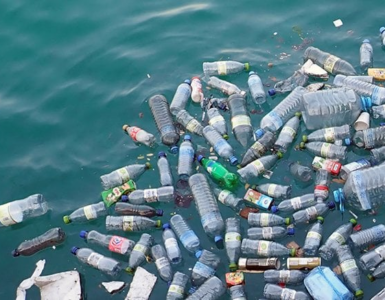Pollution levels are quite high in San Diego. This includes air pollution as well as suturated landfills. California in general is a very industrious state so it should not come as a surprise. Nonetheless this situation must be remedied fast to avoid an environmental catastrophis.
The state of California is very aware of the situation and the government has implemented waste management regulations, including CA recycling laws. Waste management companies like Bargain Dumpster and other junk disposal services have been call to the rescue to help improve this degrading siutation.
How to measure air pollution
The average air quality index (MAI) is used to measure air pollution. If the number is less than 100, the air quality is considered to be excellent; if it is more than 100, the air quality is considered to be poor.
The air quality index does not include dust, hence no official color coding criteria have been established. The Roadside Index (RPI) and Core Index (RPI) are two independent indexes that are used to measure the quality of life in urban areas.
Meteorological models are unable to account for tiny variations in performance along highways, hence MeteoBlue employs the main index as its primary measure of weather conditions. To put it another way, road-side measurements are expected to reveal greater values than forecasts.
San Diego air pollution
San Diego’s particle forecast (PM and desert dust) is high. Particulate matter (PM) in the atmosphere is a term used to describe small solid or liquid particles. Natural and man-made sources of particulate matter exist.
Particles that are small enough to enter the deepest portions of the lungs pose the biggest threat to public health. Particles less than 10 microns in diameter (about 1/7th the thickness of a human hair) are classified as PM10. Acids, metals, soot, dust, and smoke are all possible components of this brew.
Chemical reactions in the atmosphere take place as a result of motor engine emissions, resulting in the creation of dusty compounds. PM10 is commonly mistaken for smog by the naked eye because it resembles fog. In terms of air pollutants, PM10 is considered to be one of the most harmful.
Sulfur dioxide (SO2) is a colorless gas that has a strong, obnoxious stench. As a result, sulfuric acid, sulfurous acid, and sulfur particles can be formed when it combines with other chemicals, such as sulfuric acid and sulfurous acid.

Effect of air pollution on humans
A person’s respiratory system can be damaged and made more difficult to breathe even after a brief exposure to SO2.
A buildup of sulfur dioxide and other sulfur oxides in the atmosphere can lead to acid rain, which can devastate delicate ecosystems.
SO2 is especially dangerous to children, the elderly, and individuals with asthma.
One of the most distinctive characteristics of nitrogen dioxide (NO2) is its strong aroma. It’s a well-known air contaminant that has been studied. Coal, oil, and gas are the primary sources of nitrogen dioxide.
Engine exhaust accounts for the vast majority of the nitrogen dioxide found in urban areas. Toxic nitrogen dioxide contributes to the development of ozone, which in turn has an adverse effect on the health of humans.
As a result of the impaired immune system caused by exposure to NO2, the lungs become inflamed, which can lead to infections. Wheezing, coughing, colds, flu, and bronchitis are all symptoms of NO2 poisoning.
An air pollution meteogram shows San Diego’s dust forecast in four separate panels on each of the four panels.
One of the most prevalent airborne allergens is birch pollen, which can be found in the spring and later in the year at higher altitudes. Tiny dust particles are distributed by the wind during the blossoming season of trees. Five million pollen grains are produced by one birch. As a result of the air currents, bullets are dispersed and can travel great distances. Pollen counts are based on 10-meter wind gusts.
During the summer, hay fever is most commonly triggered by the pollen from grasses. It creates the most severe and difficult to treat symptoms. The pollen season can persist for months in humid areas. Pollen seasons for birch and olive trees, as well as grass pollen, are shorter in dry regions.
Thunderstorms can lead to an increase in pollen content in the air because of the strong winds that accompany them.







Add comment